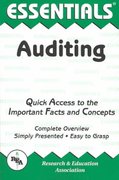Question
1. Which, if any,ofthefollowingstatementsisnot accurate? a. Every Codesectionhas a treasury regulation. b. The current Code is the 1986 Code, as amended. c. Code sections inserted
1. Which, if any,ofthefollowingstatementsisnot accurate?
a. Every Codesectionhas a treasury regulation.
b. The current Code is the 1986 Code, as amended.
c. Code sections inserted between consecutive existing section numbers are indicated by adding acapital letter to the Section number
d. None of the statements is accurate.
2.Tax law primary authority includes the following:
a. The Internal Revenue Code, Tax Treaties, and Court Decisions.
b. The Code, the Regulations and CCH Tax Research Consultant.
c. The Code, Tax Journals and IRS Revenue Rulings.
d. None of the above.
3. In general, the answer to all tax questions or issues must be traced to:
a. a Supreme Court decision.
b. an IRS Letter Ruling.
c. a tax textbook.
d. the Internal Revenue Code.
4. Sources of tax authority which can be used to determine legislative intent, i.e., the reasons or purposes for enacting a particular rule of law, include:
a. the Internal Revenue Bulletin.
b. U.S. Statutes.
c. the House Ways and Means Committee Report.
d. None of the above.
5. Transition rules, effective dates and sunset provisions are examples of enacted legislation:
a. which should be ignored in researching a tax question because they are not part of the Code.
b. which must be researched by referring to the Act in which the laws are contained, because they may not be included in the Code.
c. which are always included in the Internal Revenue Code.
d. None of the above.
6. Administrative sources of the tax law, such as IRS Regulations, Revenue Rulings and Revenue Procedures:
a. are generally drafted by the Supreme Court.
b. are official interpretations of the tax law made by the Department of the Treasury and the IRS.
c. do not have the force of law because they are the opinions of the Secretary of the Treasury.
d. All of the above.
7. Decisions of federal courts on cases and controversies involving the application or interpretation of tax law are known as:
a. judicial authority.
b. legislative authority.
c. administrative authority.
d. None of the above.
Step by Step Solution
There are 3 Steps involved in it
Step: 1

Get Instant Access to Expert-Tailored Solutions
See step-by-step solutions with expert insights and AI powered tools for academic success
Step: 2

Step: 3

Ace Your Homework with AI
Get the answers you need in no time with our AI-driven, step-by-step assistance
Get Started


